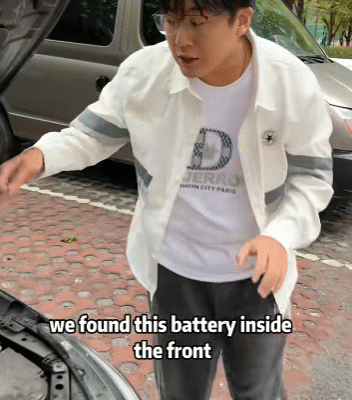
Seeing the engine fault light—often known as the “check engine” light—illuminate on your car’s dashboard can be alarming. This warning light is your vehicle’s way of telling you that something is wrong. While the problem may be minor or just a sensor glitch, it can also signal serious mechanical issues that require immediate attention. This guide will walk you through understanding what the engine fault light means, the common causes behind it, and how to solve the issue step by step.
What Does the Engine Fault Light Mean?
The engine fault light is part of your car’s onboard diagnostic system (OBD). When your car’s computer detects a problem with the engine, emission system, or other components, it turns on the light to alert you. This light can be steady or blinking:
- Steady Light: Usually means a minor issue like a loose gas cap or a faulty sensor.
- Flashing Light: Indicates a more serious problem, such as a misfire that could damage the catalytic converter. In this case, reduce speed and seek service immediately.

Step-by-Step: What to Do When the Light Comes On
1. Don’t Panic
The light doesn’t mean your car is going to break down immediately. Stay calm and assess the situation. Are you noticing strange sounds, smoke, or performance issues? If not, you can often continue driving cautiously while figuring out the next steps.
2. Check for Simple Problems First
Sometimes, the solution is simple:
- Tighten the Gas Cap: A loose or damaged gas cap can cause the system to detect a fuel vapor leak.
- Check Fluids: Low oil or coolant can also cause the light to come on.
- Listen and Smell: Do you hear knocking or hissing? Smell something burning or fuel-like? These clues help identify the issue.
3. Use an OBD-II Scanner
Most cars made after 1996 are equipped with an OBD-II port under the dashboard. You can:
- Buy or borrow an OBD-II scanner.
- Plug it in and turn the ignition to “on” without starting the engine.
- Read the diagnostic trouble codes (DTCs).
- Look up the code(s) online or in your scanner’s manual.
Common codes include:
- P0171: System Too Lean
- P0300: Random/Multiple Misfire
- P0420: Catalytic Converter Efficiency Below Threshold
4. Research or Ask a Mechanic
Once you know the code, research what it means. Some problems—like a failed oxygen sensor—are relatively easy to fix at home if you’re comfortable with tools. More complex issues like ignition timing or ECU failures are best left to professionals.
Common Reasons the Engine Fault Light Comes On
1. Faulty Oxygen Sensor
The oxygen sensor measures how much unburnt oxygen is in the exhaust. If it fails, the engine burns more fuel and emits more pollutants. Replacing this part is usually inexpensive and straightforward.
2. Loose or Damaged Gas Cap
This may seem insignificant, but a gas cap that doesn’t seal properly allows fuel vapors to escape, triggering the emissions system. Try tightening it or replacing it with a new one.
3. Failing Catalytic Converter
The catalytic converter reduces harmful emissions. If it’s clogged or failing, your car might lose power, burn more fuel, and emit bad smells. Replacing it can be costly, so it’s important to catch this issue early.
4. Faulty Mass Airflow Sensor (MAF)
The MAF sensor measures how much air enters the engine and adjusts fuel delivery accordingly. Symptoms include rough idling, stalling, and poor fuel economy.
5. Spark Plug or Ignition Coil Issues
Worn spark plugs or a bad ignition coil can cause misfires, which trigger the light. Replacing them can restore engine performance quickly.
6. EGR Valve Problems
The exhaust gas recirculation (EGR) valve helps control emissions. If clogged or malfunctioning, it can affect engine performance and emissions.

When to Visit a Mechanic
While DIY fixes are possible, it’s best to see a professional if:
- The light is blinking.
- You notice a reduction in power, strange noises, or smoke.
- You’ve fixed the suspected problem, but the light remains on.
- You’re unsure of the cause after reading the trouble code.
Certified mechanics can use professional-grade scanners to pinpoint the issue more precisely and ensure the fix is permanent.
Can You Reset the Engine Light?
Yes, but only after fixing the problem. Resetting it without addressing the issue will just cause it to come back.
Ways to reset it include:
- Disconnecting the battery for 15–30 minutes (note: may reset other settings too).
- Using an OBD-II scanner with a reset feature.
- Driving for a while: Sometimes the computer resets itself after multiple successful drive cycles.
Caution: Don’t reset the light to “hide” the issue before a vehicle inspection—it could fail the test.
Preventing Future Issues
- Regular Maintenance: Follow the manufacturer’s recommended service schedule.
- Check Engine Fluids: Oil, coolant, transmission, and brake fluids should always be at the right levels.
- Replace Air Filters and Spark Plugs: Keeping these in good condition prevents stress on the engine.
- Drive Smoothly: Aggressive driving can wear parts faster.
- Use Good Quality Fuel: Poor fuel quality can cause carbon buildup and sensor issues.

Final Thoughts
The engine fault light is your car’s early warning system. It shouldn’t be ignored, but it also doesn’t mean disaster is imminent. By staying calm, checking for basic issues, reading the diagnostic codes, and either fixing them yourself or consulting a mechanic, you can resolve the issue before it turns into something costly.
Remember, the best strategy is prevention. A well-maintained engine is far less likely to flash a warning light, keeping you safe on the road and saving you money in the long run.



